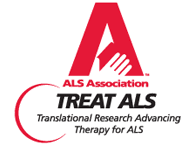You may want to hum that as you read on.

Here's another trip down memory lane. Remember the world before federal legislation required lenders and banks to provide APR and APY information in ads? Before the APR requirement, you could see an ad for loans at 2% with an obscure reference in the fine print that it was a monthly rate. No reference to the outrageous 24% APR was made. Another ad might tell you that your savings could yield 10%. Again, there may have been a reference that the 10% might be achieved at the end of a 10 year period. Who would have realized that the APY was only 1%. It was misleading for consumers who weren't watching the fine print and it made it very difficult to compare different financial institutions' products. Perhaps that was the idea.
The requirement for APR and APY specifications in advertising has given the consumer a much clearer picture of rates and lets consumers compare products much more easily.
A few years ago one ALS not-for-profit ran a compelling promotion on how many millions of dollars it had raised for research in a three-year period. We now find another organization touting its spending on research over the last ten years.
Certainly these numbers are motivators for those looking for a substantial destination for their donations, but it makes it next to impossible for us to get a clear picture of exactly what is really being spent on ALS research annually.
Here is my plea for all ALS organizations funding research:
Please tell us how many dollars you invested directly in ALS research in the last calendar year. In addition, please tell us how many of those dollars came from other ALS 501(c)3 organizations so that we don't double-count any dollar.
With those simple, clear, numbers we can understand how much is really being spent on ALS research annually.
The salesmanship of the cumulative numbers is making a very foggy picture of what is really happening. The disease is underfunded. An organization's use of cumulative numbers to appear to be bigger than other organizations does not help people understand how underfunded the effort is. Please put apples and apples on the table and let them be understood.











No comments:
Post a Comment